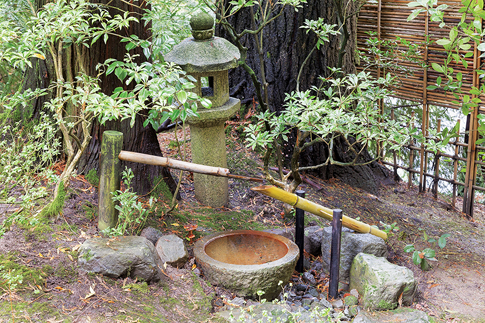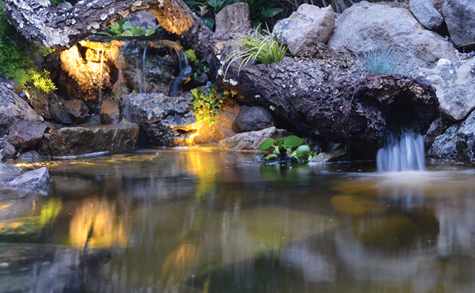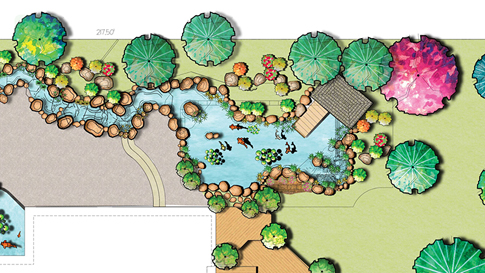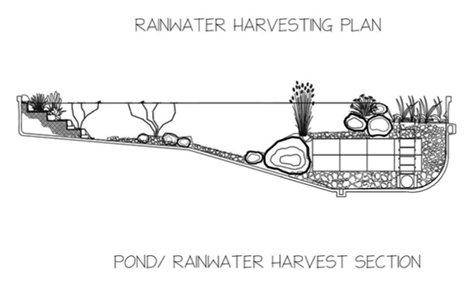Fresh water is the most precious natural resource on the planet — because over 97 percent of all water is salt water.

According to the United States Geological Survey (USGS), humanity’s primary source of fresh water — rivers — only make up 0.49 percent of the earth’s surface fresh water supply; surface fresh water only makes up 1.2 percent of all fresh water; and fresh water is only 2.5 percent of all water. Since that doesn’t mean much, consider it this way: if you think of all of the world’s water as an Olympic-sized swimming pool, you will have less than one gallon of easily available fresh water.
Luckily, there is more fresh water than just what is in rivers. The global supply of accessible fresh water (surface and ground water) makes up 0.78 percent of all water. That is one eighth of a cup of fresh water for every gallon of water.
Use, Recycle and Reuse!
Between fresh water and salt water is recycled water. And increased usage of recycled water can significantly reduce how quickly we deplete our limited quantity of fresh water.
Technically, all water is recycled. People generally understand the water cycle of precipitation, evaporation and precipitation again. For the purposes of this article, I’m referring to human-recycled water.
I am talking about recycled water because what people may not know is that the earth’s growing population is using fresh water faster than the natural water cycle can replenish.There are satellites that are able to measure areas of high water density (ground water supplies) around the world. This series of images shows how that density is decreasing in California. The science behind this image is more than I can get into here; if, however, you are interested in learning more I suggest going to Jay Famiglietti’s website (www.jayfamiglietti.com) for more information that doesn’t get too complicated too quickly.
There are several types of recycled water: grey water, reclaimed water and harvested rainwater.

Grey water is water that you have already put through a use. Used bathwater is a great example. You don’t want to drink it, but you could flush a toilet with it and your garden will appreciate it.
Reclaimed water is any used water captured, treated and reused instead of returned to the natural water cycle. The level of treatment will dictate future use of the water.
Harvested rainwater is captured precipitation. You still do not want to drink it because of the pollutants and particles it picks up from the atmosphere; however, rainwater is better for agriculture than grey water because there are no man-made solids (soap, grease, et cetera) or salts that can be detrimental to your plants or to you.
The most common form of rainwater harvesting is the tried and true rain barrel. Divert your downspouts to the barrel, put a lid on it to keep water in and other things out and you are harvesting rainwater. As environmental awareness increases, rain barrels are experiencing a surge in popularity. As with many do-it-yourself projects, there are kits available that can increase your collection and the quality of the water.
This very basic method has been in use for longer than recorded history and is very dependable. Unfortunately, there are limits to how much you can store and how well you can divert water from your roof to your storage.
Increasing Storage
Modern technology and adventurous landscaping can take rainwater harvesting to a whole new level by increasing capacity as well as capturing more than what just falls on your roof.
For example, I have a client in the process of converting his pool into a catch basin disguised as a koi pond. In this multi-stage project, we are going to put in a small pond on top of the pool — to provide circulation as well as a beautiful environment, while collecting up to 15,000 gallons of rainwater to use for the landscaping. Storage in the deep end of the pool will consist of specially designed AquaBlox blocks (developed to provide structural stability while increasing capacity) surrounded by gravel. Boulders and vegetation will improve the aesthetic while reducing the amount of water actually in the pond.
[box]Left, Final plan design of pool conversion to rainwater harvesting system and, right, Cross section of pool showing placement of AquaBlox water storage installed in the deep end. Maximum capacity of this design is 15,000 gallons.[/box]
Because the circulating pond will cover the storage system, we will prevent water loss to evaporation as well as mosquito infestation.
For those who want to increase their storage capacity and do not have a pool to convert, options can become expensive quickly. I have been playing with ideas that increase storage while creating a beautiful waterscape. Imagine, instead of a basic downspout, a spiral of bowls that “overflow” downward and finally into an underground storage. Each bowl can provide storage and, within reason, you can design the shape of the storage to reduce excavation costs.
As drought continues to plague California, Texas and other southwestern states, many water districts are offering “Cash for Grass” programs that encourage homeowners to replace their lawns with more water-efficient landscaping. If this is an available option to you, why not take advantage of the fact that you’re tearing out your lawn and dig a little deeper to install rainwater storage?

Just about any outdoor construction can provide an opportunity to install storage. Putting in a new driveway? Because you will be excavating anyway, the cost of adding a rainwater harvesting system will be incremental.
Because of the advances in technology, water storage “tanks” like those constructed with AquaBlox can support significant weight — such as a driveway with cars parked on it — even when empty.
How to Use Harvested Rainwater
Currently, irrigation is the primary use for harvested rainwater; however, any use that doesn’t require drinkable water is a possible use for your collected rainwater, so go ahead and wash the car or the pets.
Again, with technological advances, water purification systems are becoming smaller, more reliable and less expensive. In time, rainwater harvesting can supplement our drinking water as well as our irrigation water.
In the meantime, there is another use for harvested rainwater: recharging groundwater reservoirs. Precipitation is, eventually, how groundwater supplies are renewed. That process is slow and greatly impacted by human intervention — by capture or diversion. If you have easy (or even not-so-easy) access to an aquifer — such as an abandoned well — why not accelerate the process by putting your collected rainwater directly back into the system?
Creating access to an aquifer may not be a difficult as you think; it will depend on the geology and utilities already installed in your area.
In an Ideal World
In a perfect world, there would be no drought or floods and humanity would have the water they needed where they needed it. The world is not perfect, however, and frequently water is not in the right place at the right time. Thus, I want to encourage people to use this immensely rare and valuable commodity more sustainably and in a beautiful manner.




